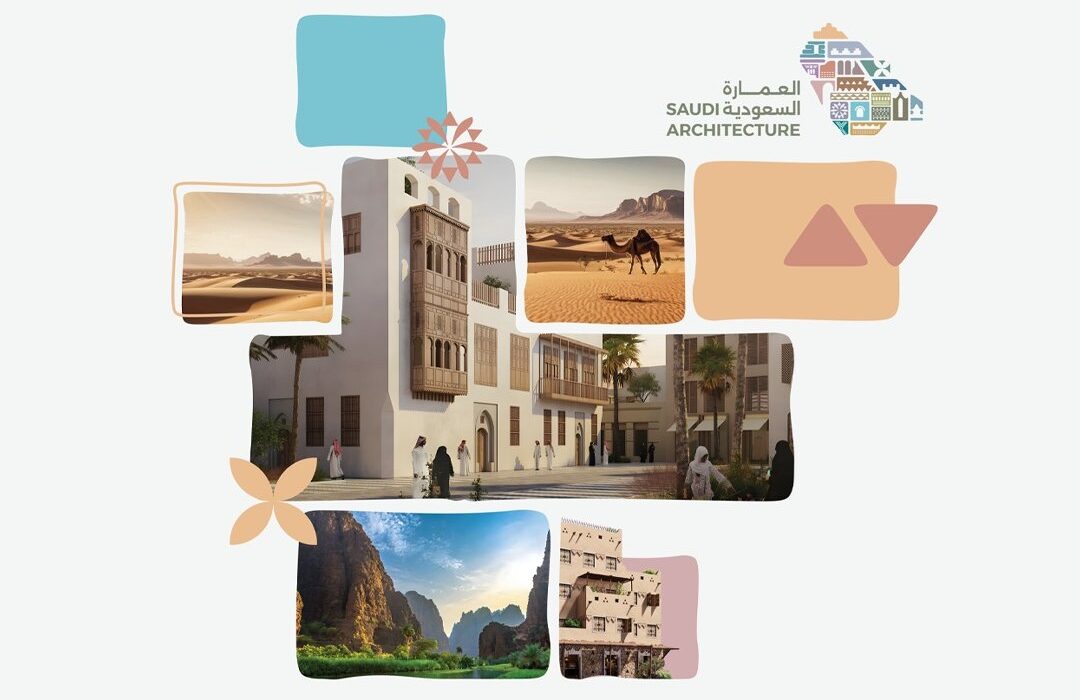Saudi Arabia is embarking on a transformative journey to preserve its rich cultural heritage while modernizing its urban landscape. As part of the ambitious Vision 2030 initiative, the Kingdom has launched the Saudi Architecture Characters Map, introducing 19 distinct architectural styles. These styles, inspired by the diverse geographical and cultural characteristics of Saudi Arabia’s regions, are set to redefine the nation’s cities by blending tradition with innovation. This article explores each of the 19 styles, their regional significance, and how they will shape the future of Saudi urban development.
A Celebration of Saudi Heritage
Each of the 19 styles reflects the unique identity of its region, ensuring that new developments remain rooted in local culture while embracing modern design principles. Below is a detailed look at each style and its associated region:
- Central Najdi – Inspired by the central Najd region, known for its traditional mudbrick architecture suited to the desert climate.
- Northern Najdi – Reflects the northern part of Najd, incorporating elements from desert and oasis environments.
- Tabuk Coast – Draws from the coastal areas around Tabuk, with designs influenced by maritime life.
- Madinah Rural – Represents the rural areas surrounding Madinah, featuring traditional village-style architecture.
- Inner Madinah – Inspired by the historical urban design of central Madinah.
- Hejazi Coast – Captures the coastal aesthetics of the Hejaz region, including cities like Jeddah.
- Taif Highlands – Reflects the cooler, mountainous climate of the Taif highlands.
- Sarawat Mountains – Inspired by the rugged terrain of the Sarawat mountain range.
- Aseer Escarpment – Features terraced architecture typical of the Aseer region’s escarpments.
- Tuhama Foothills – Represents the transitional areas between the Tuhama coast and highlands.
- Tuhama Coast – Draws from the coastal plains of Tuhama, with designs adapted to sea-level conditions.
- Farasan Islands – Unique island architecture from the Red Sea’s Farasan Islands.
- Abha Highlands – Reflects the elevated and scenic designs of the Abha highlands.
- Bisha Desert – Incorporates adaptations for the arid desert climate around Bisha.
- Najran – Inspired by the distinct cultural influences of the southern Najran region.
- Al-Ahsa Oasis – Features water-centric designs from the palm grove-rich Al-Ahsa oasis.
- Al-Qatif Oasis – Reflects the historical agricultural architecture of the Al-Qatif oasis.
- East Coast – Draws from the urban styles of the eastern coastal areas, including Dammam.
- Eastern Najdi – Blends desert and urban elements from the eastern parts of Najd.
These styles are designed to ensure that Saudi cities maintain their cultural authenticity while embracing sustainable development, making them a cornerstone of the Kingdom’s urban future.
Regional Significance and Cultural Impact
Each architectural style is deeply tied to its region’s natural environment and cultural history. Here’s how some of these styles reflect their origins:
- Central Najdi: Uses thick mudbrick walls to combat the harsh desert heat, a practical adaptation to the arid climate.
- Hejazi Coast: Incorporates sleek, airy designs suited to the humid coastal conditions of cities like Jeddah.
- Al-Ahsa Oasis: Focuses on water-centric architecture, reflecting the region’s historical reliance on oasis agriculture and palm groves.
This diversity ensures that Saudi Arabia’s architectural heritage is preserved across its varied landscapes—from deserts and mountains to coasts and oases. What’s more, each style includes three design typologies—traditional, transitional, and contemporary—allowing architects to innovate while staying true to local contexts.
Economic and Urban Development Benefits
The Saudi Architecture Characters Map is more than a cultural project; it’s a key driver of economic growth under Vision 2030. The initiative is expected to:
- Contribute over SR8 billion ($2.13 billion) to the cumulative GDP by 2030.
- Create more than 34,000 jobs in sectors like construction, engineering, and urban development.
- Attract investment in real estate, tourism, and infrastructure.
By enhancing the aesthetic appeal of Saudi cities, the project will boost tourism and stimulate growth in related industries. The phased implementation will begin in key cities like Taif, Makkah, Al-Ahsa, and Abha, focusing on government buildings, commercial structures, and major projects.
The launch of these 19 architectural styles marks a pivotal moment in Saudi Arabia’s journey toward sustainable urban development. By blending heritage with innovation, the Kingdom is setting a new standard for city planning in the region. This initiative ensures that Saudi cities remain vibrant, culturally authentic, and competitive on the global stage.
For residents, tourists, and investors, the Saudi Architecture Characters Map offers a unique opportunity to engage with the Kingdom’s rich heritage and dynamic growth. Whether you’re drawn to the traditional mudbrick designs of Najd or the modern coastal aesthetics of the Hejazi Coast, these styles promise to shape the future of Saudi Arabia’s urban landscape.


